Classifying sound using Machine Learning
Jon Nordby jon@soundsensing.no
February 27, 2020
Introduction
Jon Nordby
Internet of Things specialist
- B.Eng in Electronics
- 10 years as Software developer. Embedded + Web
- M. Sc in Data Science
Now:
- CTO at Soundsensing
Thesis
Environmental Sound Classification on Microcontrollers using Convolutional Neural Networks

Soundsensing

Dashboard

Goal
The goals of this talk
you as Developers, understand:
possibilities and applications of Audio ML
overall workflow of creating an Audio Classification solution
what Soundsensing provides in this area
Background
Why Audio Classification
- Rich source of information
- Any physical motion creates sound
- Sound spreads in a space
- Enables non invasive sensing
- Great compliment to image/video
- Humans use our hearing usefully in many tasks
- Machines can now reach similar performance
Applications
Audio sub-fields
- Speech Recognition. Keyword spotting.
- Music Analysis. Genre classification.
- General / other
Examples
- Eco-acoustics. Analyze bird migrations
- Wildlife preservation. Detect poachers in protected areas
- Manufacturing Quality Control. Testing electric car seat motors
- Security: Highlighting CCTV feeds with verbal agression
- Medical. Detect heart murmurs
- Process industry. Advance process once audible event happens (popcorn)
Neural Network co-processors
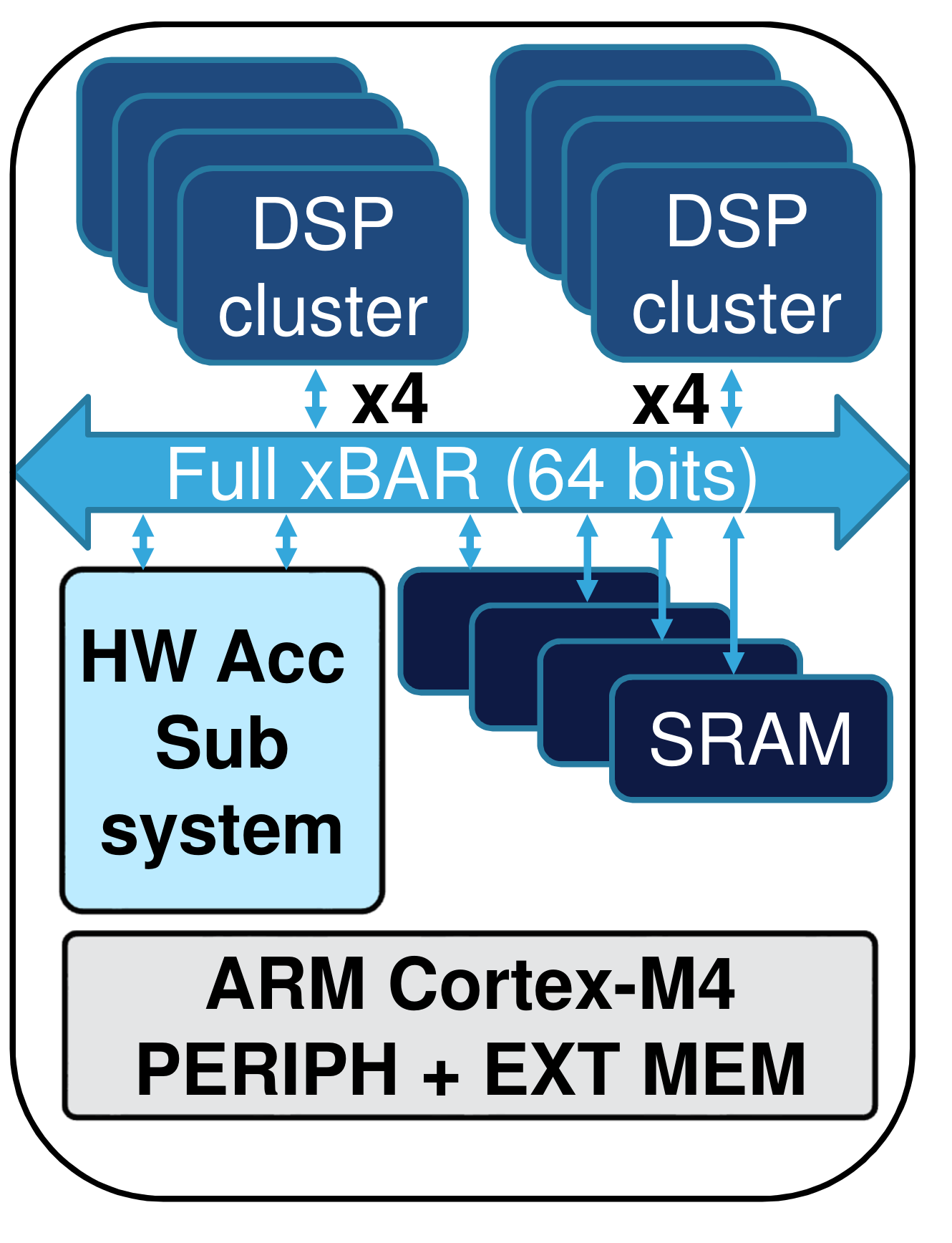
Expected 10x power efficiency increases.
Making an Audio ML solution
Overall process
- Problem definition
- Data collection
- Data labeling
- Training setup
- Feature representation
- Model
- Evaluation
- Deployment
Example task
Noise Classification in Urban environments. AKA “Environmental Sound Classification”
Given an audio signal of environmental sounds,
determine which class it belongs to
- Widely researched. 1000 hits on Google Scholar
- Open Datasets. Urbansound8k (10 classes), ESC-50, AudioSet (632 classes)
- 2017: Human-level performance on ESC-50
Supervised Learning

Learning process
Audio Classification
Given an audio clip
with some sounds
determine which class it is
Classification simplifications
- Single output. One class at a time
- Discrete. Exists or not
- Closed set. Must be known class
Data collection
Key challenges
- Ensuring representativeness
- Ensuring coverage
- Maintaining structure
- Capturing relevant metadata
- Maintaining privacy
Data management

Best practice: Design the process, document in a protocol
Data Requirements
Depends on problem difficulty
- Number of classes
- Variation inside class
- Distance between classes
- Other sounds, outside classes
Targets
- Must: >100 labeled instances per class
- Want: >1000 labeled instances per class
Urbansound8k: 10 classes, 11 hours of annotated audio
Data labeling
Challenge: Keeping quality high, and costs low
- What is the human level performance?
- Annotator self-agreement
- Inter-annotator agreement
How to label
- Outsource. Data labeling services, Mechanical Turk, ..
- Crowdsource. From the public. From your users?
- Inhouse. Dedicated resource? Part of DS team?
- Automated. Other datasources? Existing models?
Annotation tools
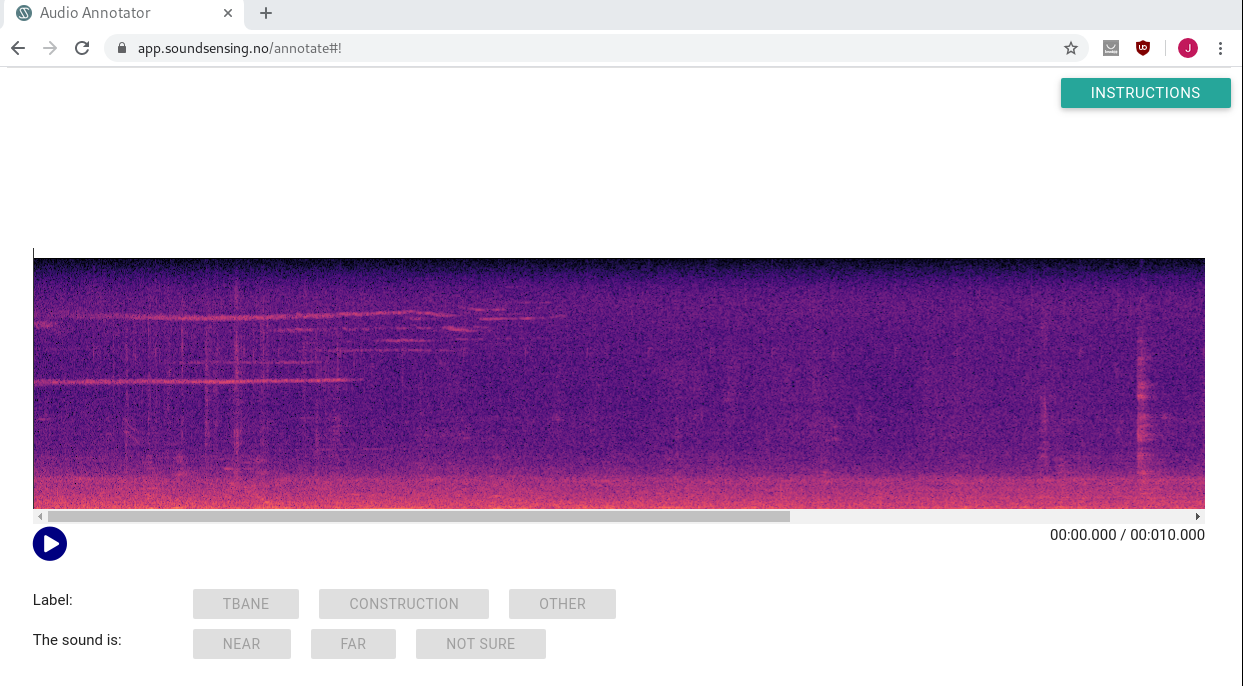
Curated dataset

Pipeline
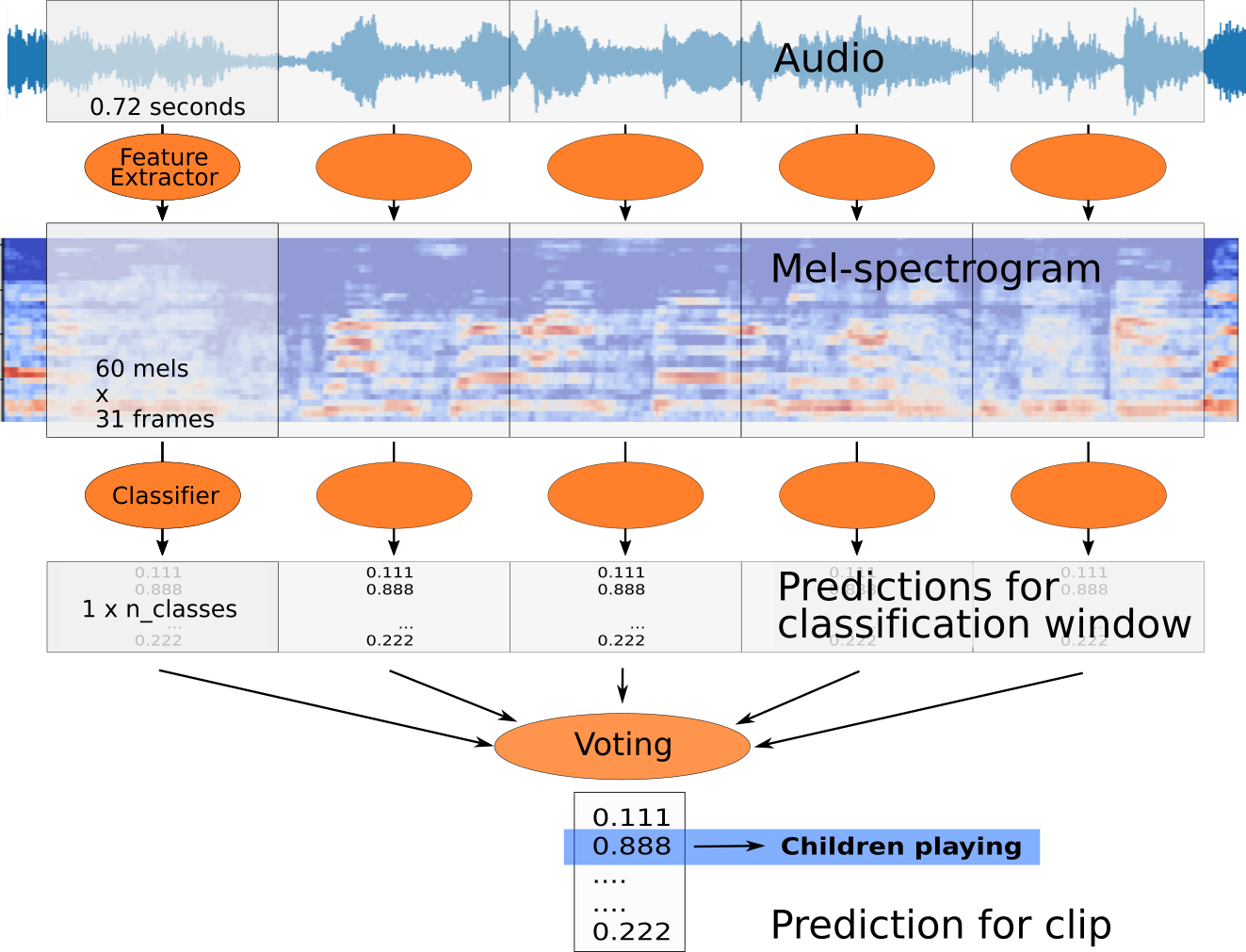
Convolutional Neural Network

Model
Evaluation

Summary
Standard models exist
Try the standard audio pipeline, it often does OK.
- Fixed-length analysis windows
- Use log-mel spectrograms as features
- Convolutional Neural Network as classifier
- Aggregate prediction from each window
All available as open source solutions.
Data collection is not magic
- Structure collection upfront
- Budget resources for collection and labeling
- Integrate quality checking
- Build it up gradually
Doable, but takes time!
Now what
So have a model that performs Audio Classification on our PC.
But we want to monitor a real-world phenomenon.
How to deploy this?
Deploying
Architectures
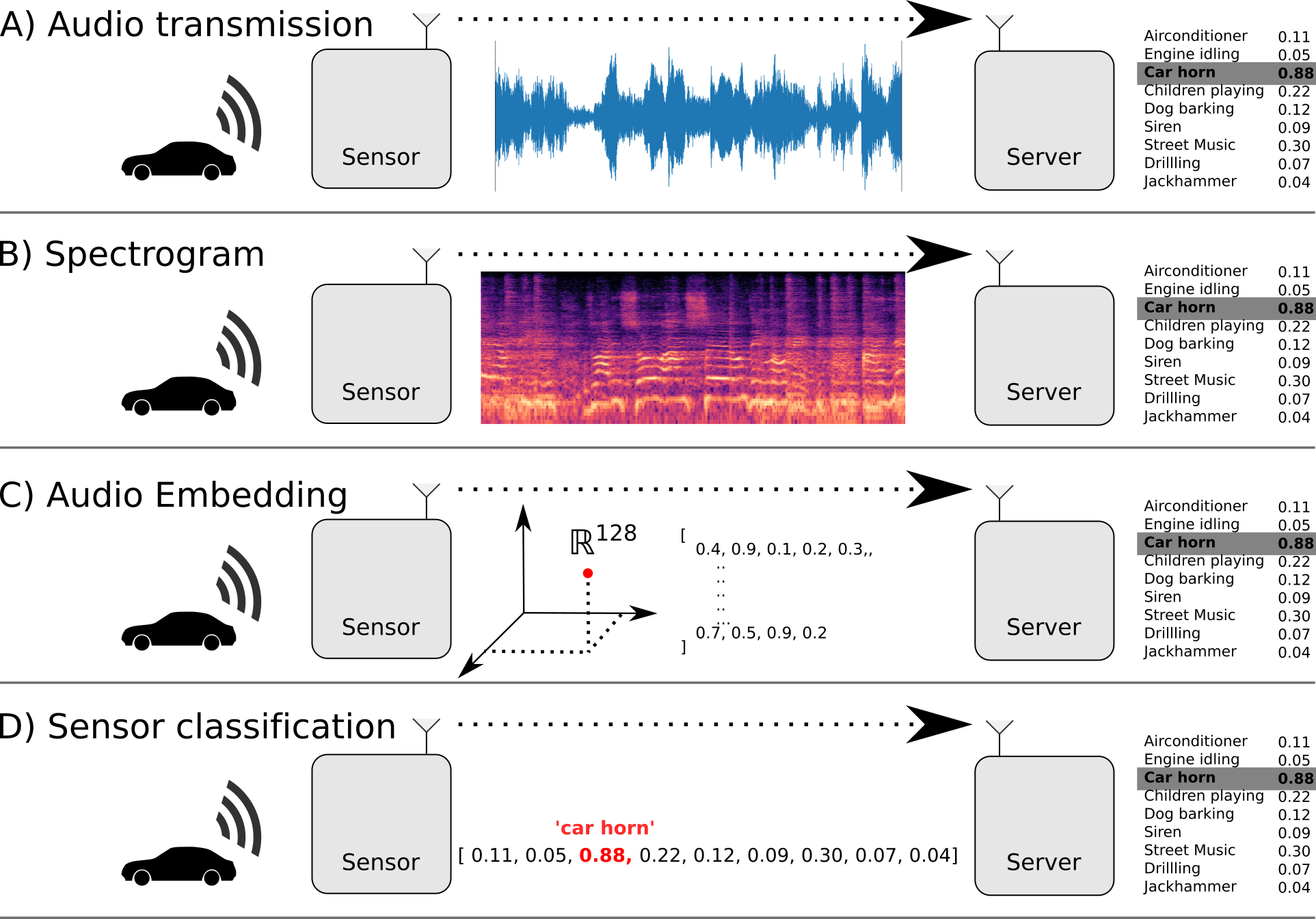
Soundsensing Platform
Demo video
Noise Monitoring solution

Outro
Partner opportunities
We are building a partner network
- Partner role: Deliver solutions and integration on platform
- Especially cases that require a lot of custom work
Email: jon@soundsensing.no
Employment opportunities
Think that this sounds cool to work on?
- Internships in Data Science now
- Hiring 2 developers in 2020
Email: jon@soundsensing.no
Investment opportunities
Want to invest in a Machine Learning and Internet of Things startup?
- Funding round open now
- 60% comitted
- Some open slots still
Email: ole@soundsensing.no
More resources
Machine Hearing. ML on Audio
Machine Learning for Embedded / IoT
Thesis Report & Code
Soundsensing
Questions
?
Email: jon@soundsensing.no
BONUS
Thesis results
Model comparison
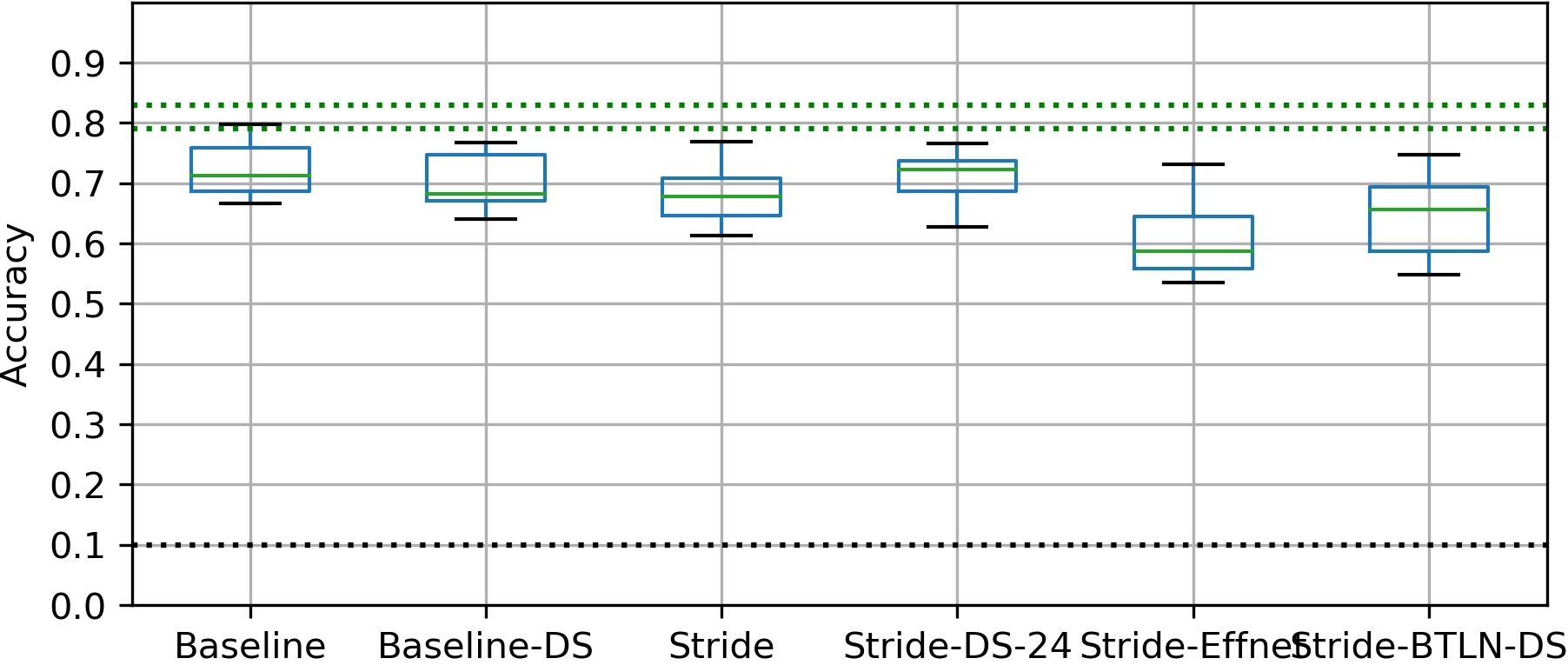
List of results

Confusion
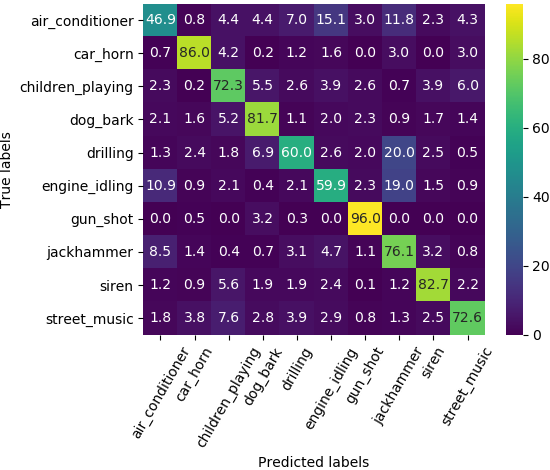
Grouped classification
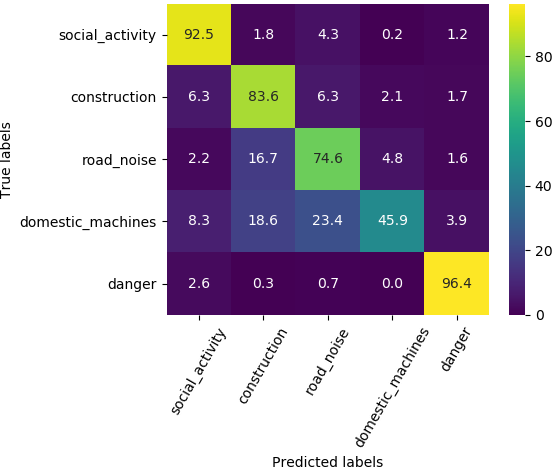
Foreground-only
Unknown class

Background
Mel-spectrogram
Noise Pollution
Reduces health due to stress and loss of sleep
In Norway
- 1.9 million affected by road noise (2014, SSB)
- 10’000 healty years lost per year (Folkehelseinstituttet)
In Europe
- 13 million suffering from sleep disturbance (EEA)
- 900’000 DALY lost (WHO)
Noise Mapping
Simulation only, no direct measurements
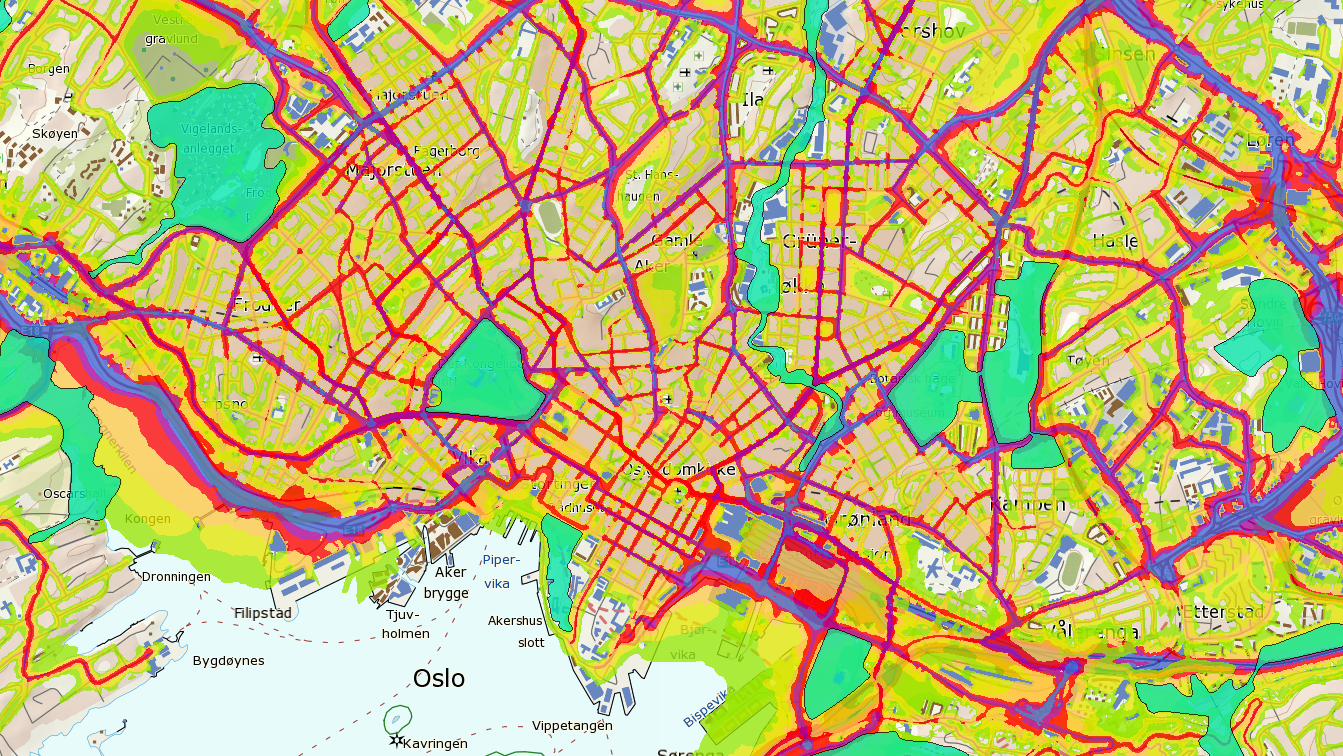
Audio Machine Learning on low-power sensors
Wireless Sensor Networks
- Want: Wide and dense coverage
- Need: Sensors need to be low-cost
- Opportunity: Wireless reduces costs
- Challenge: Power consumption
What do you mean by low-power?
Want: 1 year lifetime for palm-sized battery
Need: <1mW system power
General purpose microcontroller
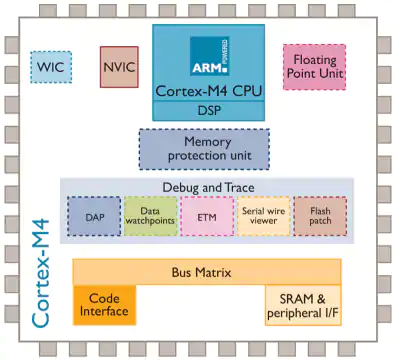
STM32L4 @ 80 MHz. Approx 10 mW.
- TensorFlow Lite for Microcontrollers (Google)
- ST X-CUBE-AI (ST Microelectronics)
FPGA
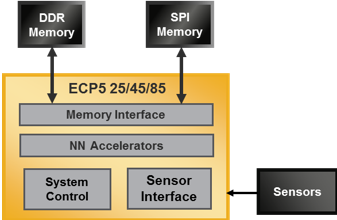
Human presence detection. VGG8 on 64x64 RGB image, 5 FPS: 7 mW.
Audio ML approx 1 mW
Neural Network co-processors micro

2.9 TOPS/W. AlexNet, 1000 classes, 10 FPS. 41 mWatt
Audio models probably < 1 mWatt.
Urbansound8k

Environmental Sound Classification on edge
Existing work
- Convolutional Neural Networks dominate
- Techniques come from image classification
- Mel-spectrogram input standard
- End2end models: getting close in accuracy
- “Edge ML” focused on mobile-phone class HW
- “Tiny ML” (sensors) just starting
Model requirements
With 50% of STM32L476 capacity:
- 64 kB RAM
- 512 kB FLASH memory
- 4.5 M MACC/second
Existing models

eGRU: running on ARM Cortex-M0 microcontroller, accuracy 61% with non-standard evaluation
Research Topics
Waveform input to model
- Preprocessing. Mel-spectrogram: 60 milliseconds
- CNN. Stride-DS-24: 81 milliseconds
- With quantization, spectrogram conversion is the bottleneck!
- Convolutions can be used to learn a Time-Frequency transformation.
Can this be faster than the standard FFT? And still perform well?
On-sensor inference challenges
- Reducing power consumption. Adaptive sampling
- Efficient training data collection in WSN. Active Learning?
- Real-life performance evaluations. Out-of-domain samples
Shrinking a Convolutional Neural Network
Reduce input dimensionality
- Lower frequency range
- Lower frequency resolution
- Lower time duration in window
- Lower time resolution
Reduce overlap

Models in literature use 95% overlap or more. 20x penalty in inference time!
Often low performance benefit. Use 0% (1x) or 50% (2x).
Depthwise-separable Convolution
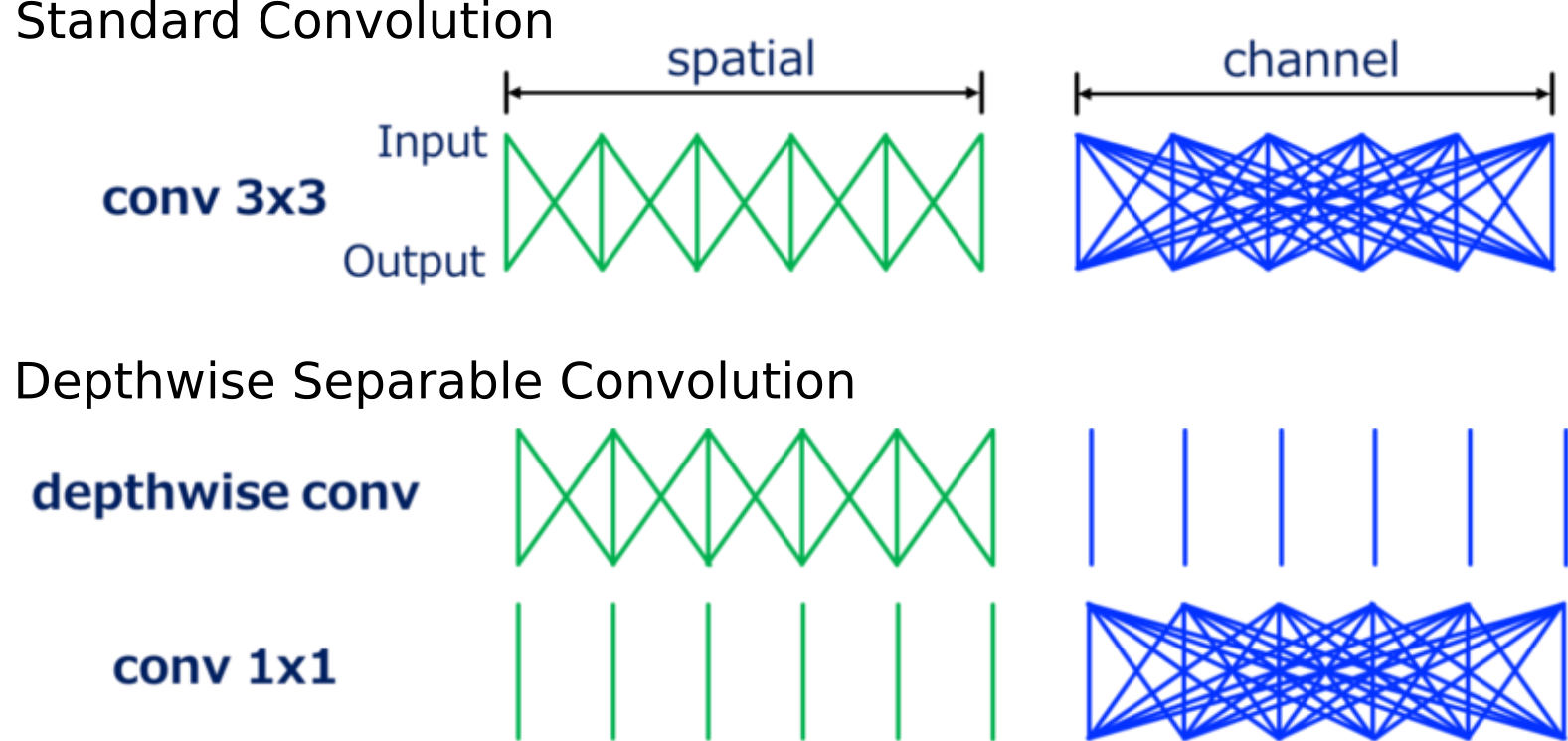
MobileNet, “Hello Edge”, AclNet. 3x3 kernel,64 filters: 7.5x speedup
Spatially-separable Convolution
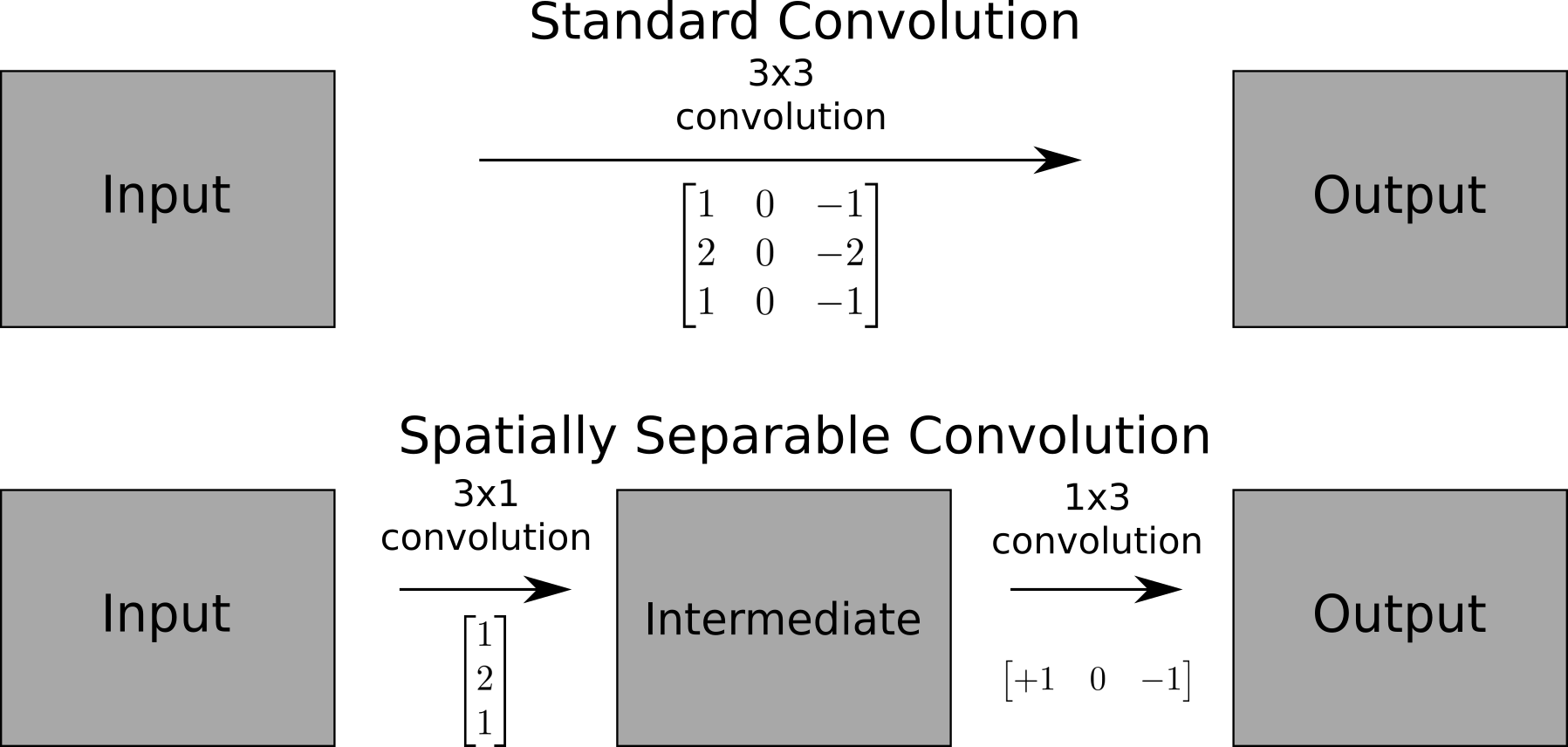
EffNet, LD-CNN. 5x5 kernel: 2.5x speedup
Downsampling using max-pooling
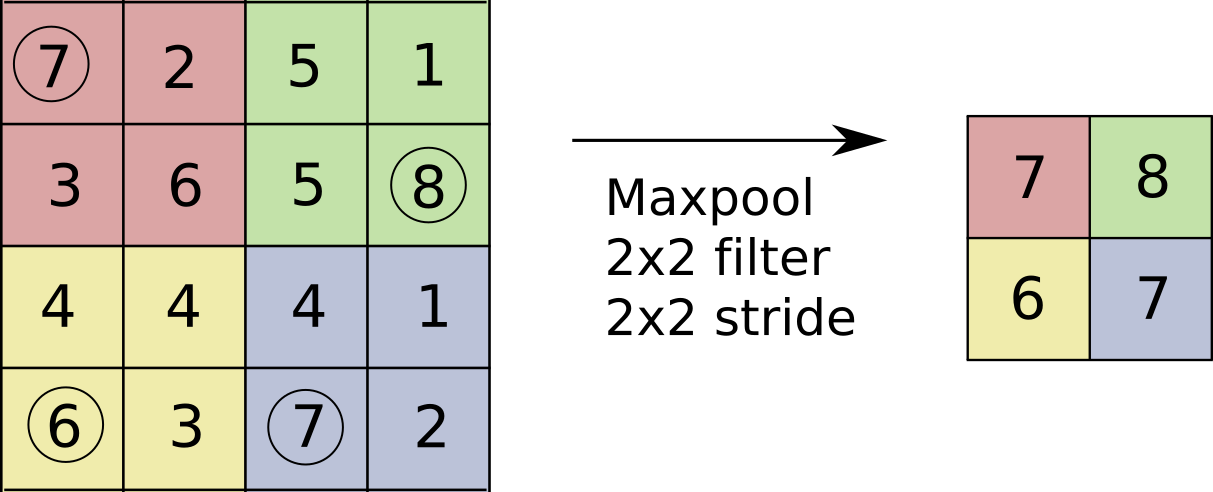
Wasteful? Computing convolutions, then throwing away 3/4 of results!
Downsampling using strided convolution
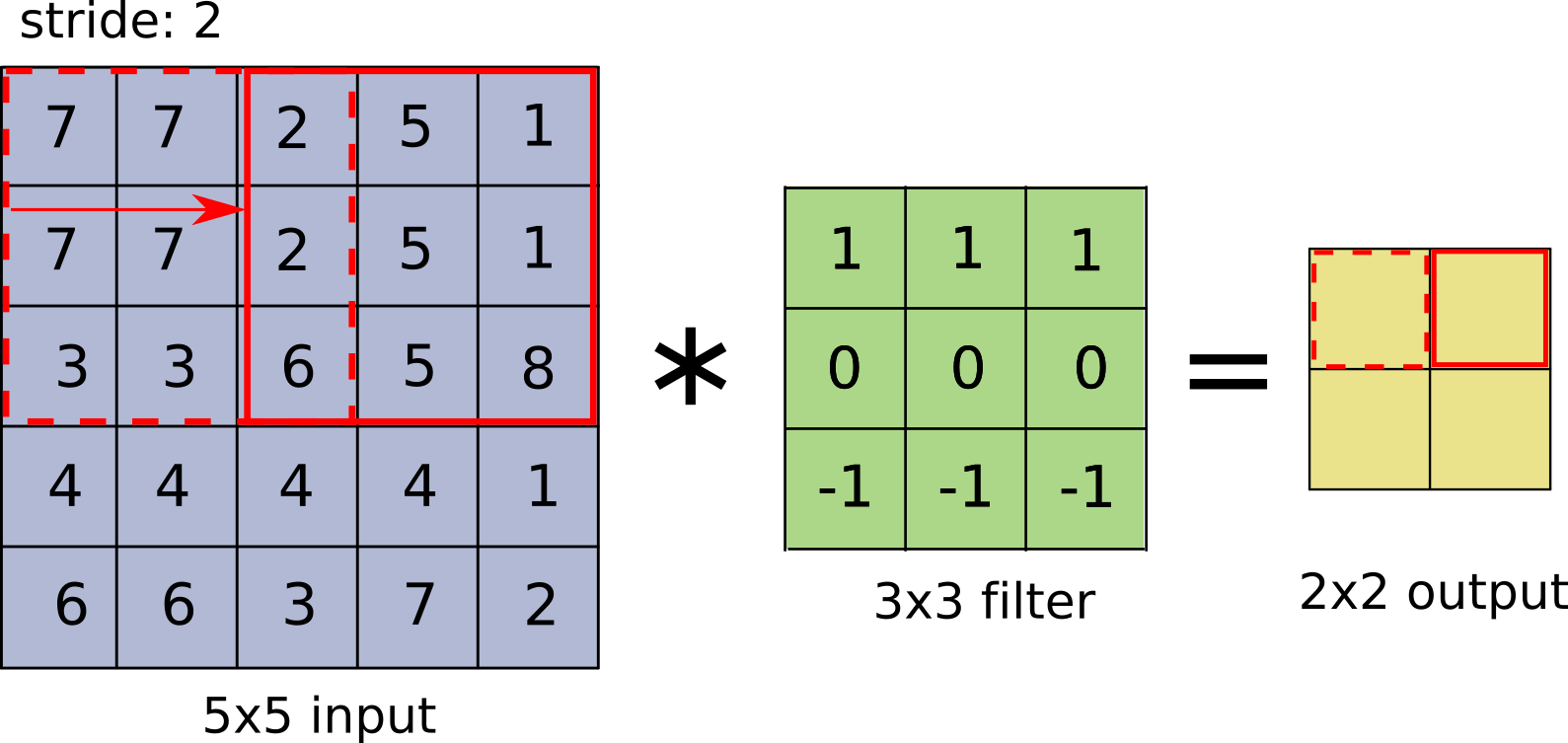
Striding means fewer computations and “learned” downsampling
Model comparison

Performance vs compute
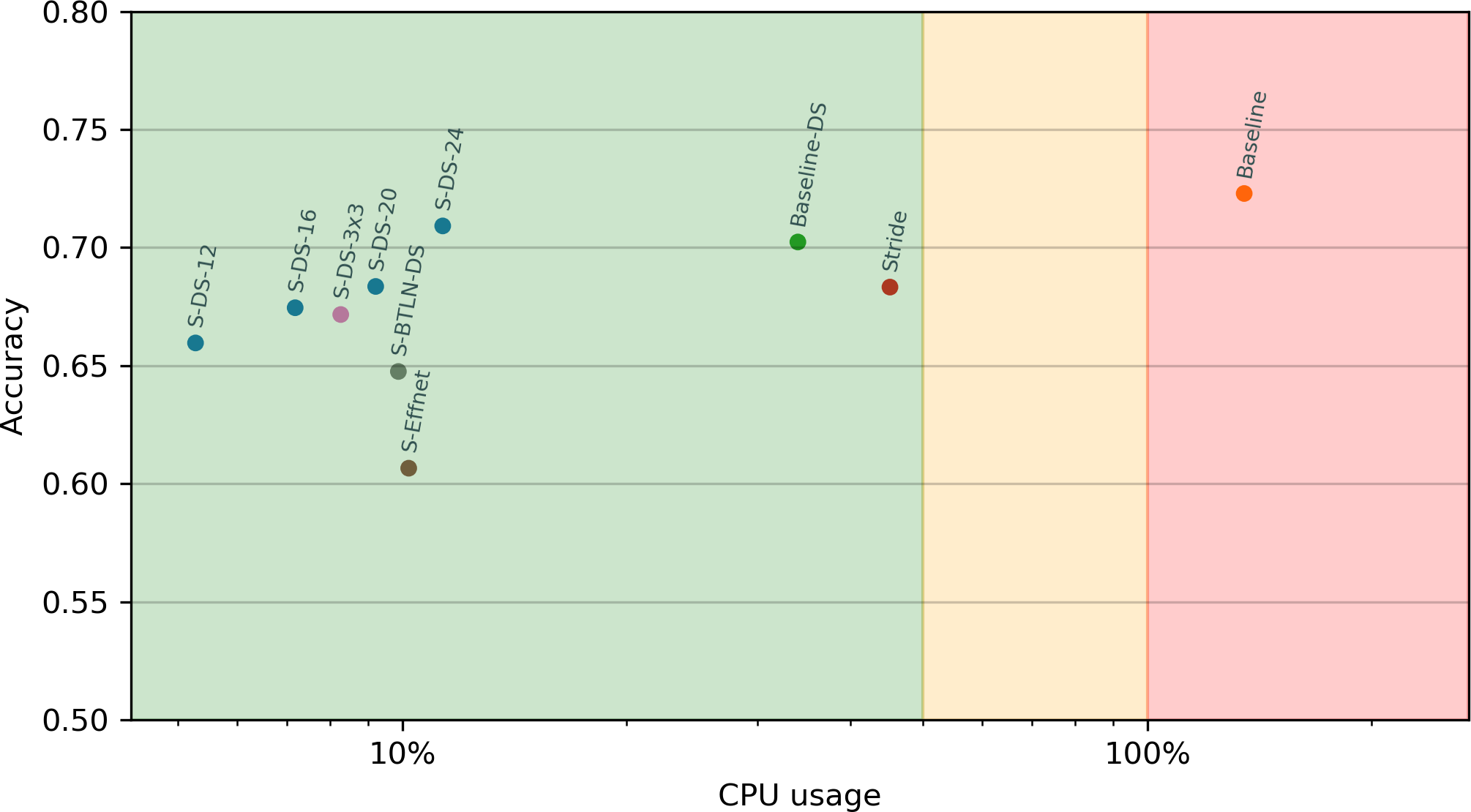
Quantization
Inference can often use 8 bit integers instead of 32 bit floats
- 1/4 the size for weights (FLASH) and activations (RAM)
- 8bit SIMD on ARM Cortex M4F: 1/4 the inference time
- Supported in X-CUBE-AI 4.x (July 2019)
